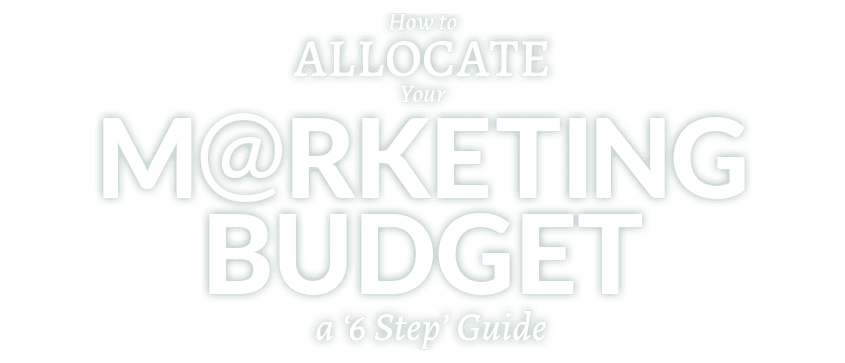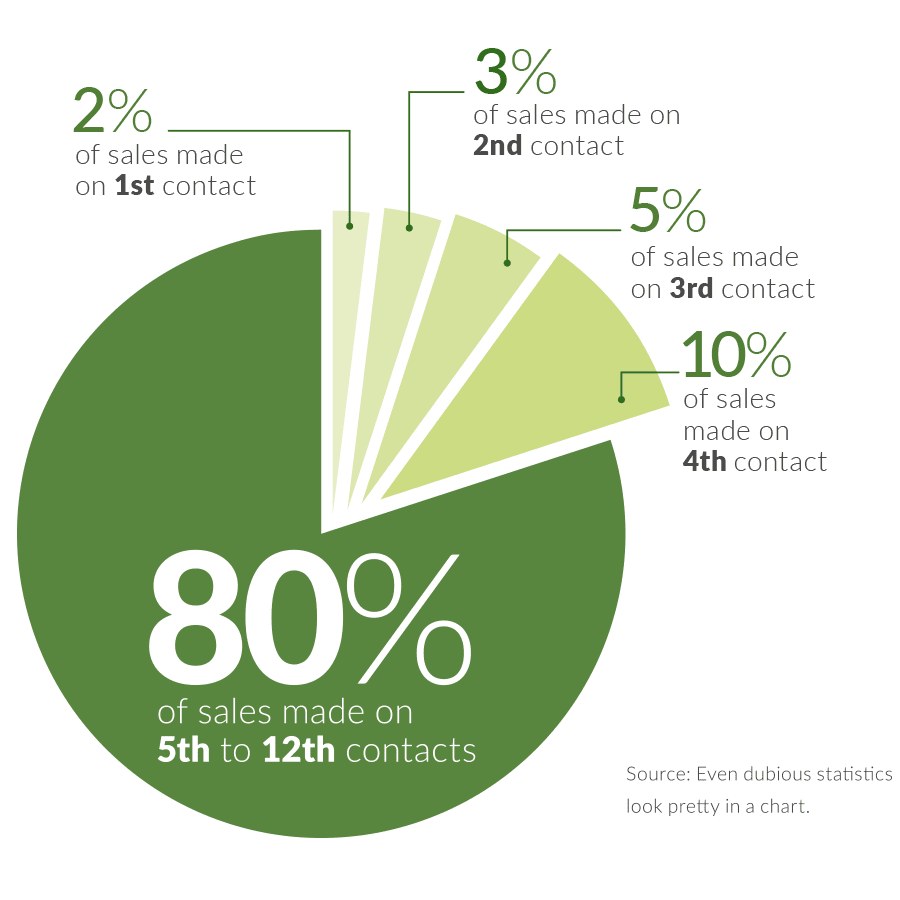approx 9 minute read
It’s all about potential
We all want to maximise the most momentum from our marketing budgets.
But where do we start?
It’s about realising the most potential from a very valuable, very limited, resource.
Choosing where to allocate your marketing budget is one of the most crucial decisions you’ll need to regularly make.
That applies as a start-up, a small business owner, or a marketing manager in an established business.
So, depending on the weather where you are, grab an appropriate refreshment and let’s dive in.
We have lots of bite-sized, actionable advice to share on how to invest your marketing budget wisely.
Let’s begin.
Step 1: Establishing your marketing budget
Before we start spending anything, let’s figure out how much we’ve got to play with.
Establishing a marketing budget can be as straightforward or as complex as you make it.
But here are a few common and simple approaches:
Percentage of revenue
A common method is to allocate a percentage of your revenue to marketing.
Established businesses often allocate between 6-12%.
For startups, this might work differently. As you might be in a pre-revenue stage.
In which case you’d be investing a proportion of your seed capital.
Start-ups also often require a bit more to get going.
And so investing 25%+ of the available funding or prospected annual revenue is not unusual.
Goals and objectives
Define what you want to achieve. Is it brand awareness, lead generation, or customer retention?
Your goals will influence your budget needs.
Many businesses calculate how many sales / orders / customers they want and work backwards based on a Cost Per Conversion basis.
Whether factual or estimated.
Market research
Understand your industry standards.
There are plenty of resources that can offer insights. See what others in your industry are spending.
When it comes to digital marketing, there is software available that can even estimate what your competitors are spending.
If your competitors are going big, you will need to keep up or find clever ways to outsmart them.
Step 2: Identify your target market
Marketing to everyone is like throwing spaghetti at a wall and hoping it sticks. Instead, get specific.
Create customer personas
Develop detailed profiles of your ideal customers. Include demographics, behaviours, and preferences.
Market segmentation
Divide your audience into segments based on shared characteristics.
This allows for more targeted and effective marketing.
We have a dedicated section about working out who your ideal customers are, or could be, in our post about creating a marketing plan.
Step 3: Optimise your landing page
Imagine spending a fortune on marketing, only to send people to a dodgy website or an underwhelming store.
Avoid this by ensuring that your CTA destination is in tip-top shape:
Website optimisation
Make sure your website is user-friendly, fast, and mobile-responsive.
Check out tools like Google Analytics to understand where visitors are dropping off.
Landing pages
For specific campaigns, create dedicated landing pages that are designed to convert.
They should be clear, concise, and aligned with your ad content. (And more importantly, user intent)
Physical storefront
Your bricks-and-mortar presence should be enticing, inviting, and reflective of your brand.
Step 4: Manage your online reputation
Some things never change in business.
Just like 100 years ago, reputation remains everything.
The big difference? Word spreads a lot faster now!
So before you launch any campaigns, do what you can to make sure online feedback about your business is ship-shape.
Reviews and ratings
Encourage satisfied customers to leave positive feedback on Google, Facebook, TripAdvisor, or Trustpilot.
Address any negative feedback promptly and professionally.
If you’d like some more advice on this, our UK partners have a great article that you can check out: Online Reputation Management.
We have a smart tool that helps you to manage reviews. It’s part of our SEO console suite.
Plus, if you need a professional polish on your Google Business Profile to boost your local rankings, check out Google Business Booster.
Social media presence
Maintain active and engaging social media profiles.
Share valuable content, respond to comments, and build a community.
Step 5: Select and prioritise your marketing tactics
After identifying your target market, it’s time to think about how you will reach them.
Identify high-ROI channels
Focus on marketing channels that have proven to deliver a good return on investment.
This might be social media advertising, email marketing, or SEO.
Omni-channel approach
Don’t put all your eggs in one basket. Use a mix of physical and digital marketing strategies.
For example, combine local events with online ads.
Customise for different audiences
Like catching different fish in different conditions, promoting each of your products and services will require a variety of marketing approaches.
Tailor your tactics to fit each segment of your target market.
But how do you prioritise?
So you’re at a stage where you’ve worked out what you want to say, who you want to say it to, and how you’re gonna get the message out there.
But you could have thousands of ideas. How do you decide where to allocate the budget and which to prioritise?
Time and money are limited resources. Energy and opportunity are just as precious. So we need to choose our path wisely.
Prioritise based on budget
Budget allocations vary extremely from industry to industry and business to business.
But as a very broad representation, it’s not unusual for a business to allocate the following percentages to their plan:
- 50% Digital Marketing (Social, Content, SEO, Ads, Email, Affiliates, Influencer Marketing)
- 20% Traditional Print & Display Marketing
- 20% Networking, Shows, Events, Promotions, Giveaways, Sponsorships
- 10% Experimental Marketing
It’s a good idea to always allocate something for trying new ideas. Plus it’s exciting.
But so as not to get too carried away, a sizeable chunk of your investment should be allocated to the activity you believe is tried and tested.
That leads us to our next point…
Prioritise based on best chance of success
Clearly, it makes sense to prioritise activity that you believe will work well.
Perhaps because it’s worked well for you in the past.
If you don’t have previous, then perhaps the confidence can stem from a blatant connection.
For example, when the link between your product, the target market, and the placement opportunity is evident.
A hot-dog franchise taking a stand at a food franchise expo. An ice cream van at the beach.
These aren’t innovative. They’re obvious.
A pickle stand at a cheese rolling contest? Could work. Less obvious.
So it definitely doesn’t mean you shouldn’t also make time to try some things that might work.
Just again that it makes sense to start with more surefire things to get some momentum.
Prioritise based on time
Some marketing tactics take longer than others to see a return.
Things like Content marketing, SEO, and brand awareness campaigns can take time to deliver.
Networking can take time to build trust and rapport. Events are typically only as successful as the follow-up.
Even PR, print advertising, and direct mail can take weeks.
Although, if you are launching or working in a particular area, then performance can be boosted by the timing and relevance or a door-drop campaign.
That said, selling to existing customers has been proven time and time again to be easier than attracting new ones.
And depending what you do, it can take as many as 12 touch-points before you land that first sale.
You might need quick results. If so, Ads on search and social platforms are often the fastest way to gain momentum.
And even email marketing can offer quick wins… Again, so long as you’ve already worked on building an audience, of course.
Mix well and serve
It should come as no surprise to you that often the best approach is a mix of all the above.
Each consideration is like a different ingredient, with varying measures playing an important part in your recipe.
Your individual marketing cocktail is unlikely to taste exactly like another.
Step 6: Monitor and adjust
Marketing isn’t a set-and-forget activity.
Regularly review your results and tweak your strategies as needed.
Track performance
Use tools like Google Analytics, social media insights, and email marketing metrics to track the performance of your campaigns.
Adjust budgets
If something’s working well, consider investing more in it.
If it’s not delivering results, don’t be afraid to cut your losses and try something new.
Regular reviews
Set up monthly or quarterly reviews to assess your overall marketing performance and make necessary adjustments.
Digital Marketing Gameplan
Our Digital Marketing Gameplan is a quick survey which asks questions about your business and your target market.
Then it will recommend what areas of Digital Marketing are worth considering or focusing on.
Spoiler alert – If your website or landing page needs help, as mentioned above, you should definitely start there.
No point leading the horse to water if the water stinks.
From there, we’ll make suggestions based on how quickly you tell us you need results, combined with the geographic area you wish to target.
Not one size
However, remember that marketing is not a one-size-fits-all prescription.
Each plan will need to be analysed and tweaked by a real human expert with the benefit of context.
If desired, you have the opportunity to request this at the end of the survey.
Marketing money matters
If you’re limited by budget there are still plenty of things you can do.
Get a website live. Order some business cards. Meet people, knock doors, ask friends and family for recommendations.
Be active on social media. Especially LinkedIn. Look into SEO console for a cost-effective way to begin your SEO journey.
For less than $200 a month, you should probably work on all the above, plus using Google Business Booster to improve your visibility, especially if you offer a local ‘near me’ type of search that people are looking for.
Our professional SEO packages start from $350. However, SEO is a long-term strategy for ongoing sustainable growth.
With a monthly budget of $350-$2500 a month, you can explore a range of professional SEO, Paid Ad, and Social Media services.
A combination of a few different channels is the best way to get early momentum whilst also working towards sustainable levels of success.
Fantastic traction can be achieved in niche or local markets with a respectable budget.
Meanwhile, it’s not unusual for larger businesses looking for national exposure in competitive markets to invest in the region of $5k-$10k per month in their digital marketing efforts.
Some other bitesize examples
Let’s bring it all together with some example low-context bite-size budget allocations.
In reality, each example would go into much more detail.
But this exercise is useful to show a rough outline of how different types of businesses might tackle things.
Again, this is just for illustration. It doesn’t mean your allocation should look like this.
Startup on a Low Budget
Revenue: > $50,000
Annual Marketing Budget (15%): $7,500
Allocation:
- Website & content: $2,500
- Flyers and stationery $500
- Social media ads: $1,500
- Launch event: $2,000
- Networking: $1,000
Established small business (e.g. local trade)
Revenue: $200,000
Annual Marketing Budget (8%): $16,000
Allocation:
- Local SEO: $3,000
- Google ads: $4,000
- Social media ads: $3,000
- Direct mail and referral schemes: $1,000
- Community events & sponsorship: $1,000
- Networking: $1,000
- Signage, Van graphics, Branded clothing $3,000
B2B SaaS:
Revenue: $5,000,000
Marketing Budget (10%): $500,000
Allocation:
- Content & email marketing: $100,000
- Trade shows and conferences: $50,000
- PR, press ads and direct mail: $50,000
- Social Media and YouTube advertising: $75,000
- Influencer marketing, affiliates & sponsorships: $75,000
- SEO and PPC: $150,000
Local help
Allocating your marketing budget is a bit like assembling a jigsaw puzzle.
Each piece has its place, and together, they create a complete picture.
Regular reviews and adjustments will keep your strategy fresh and effective.
Remember, it’s not just about how much you spend, but how wisely you spend it.
Book a free consultation to explore what approach to marketing would be the best fit for you.












